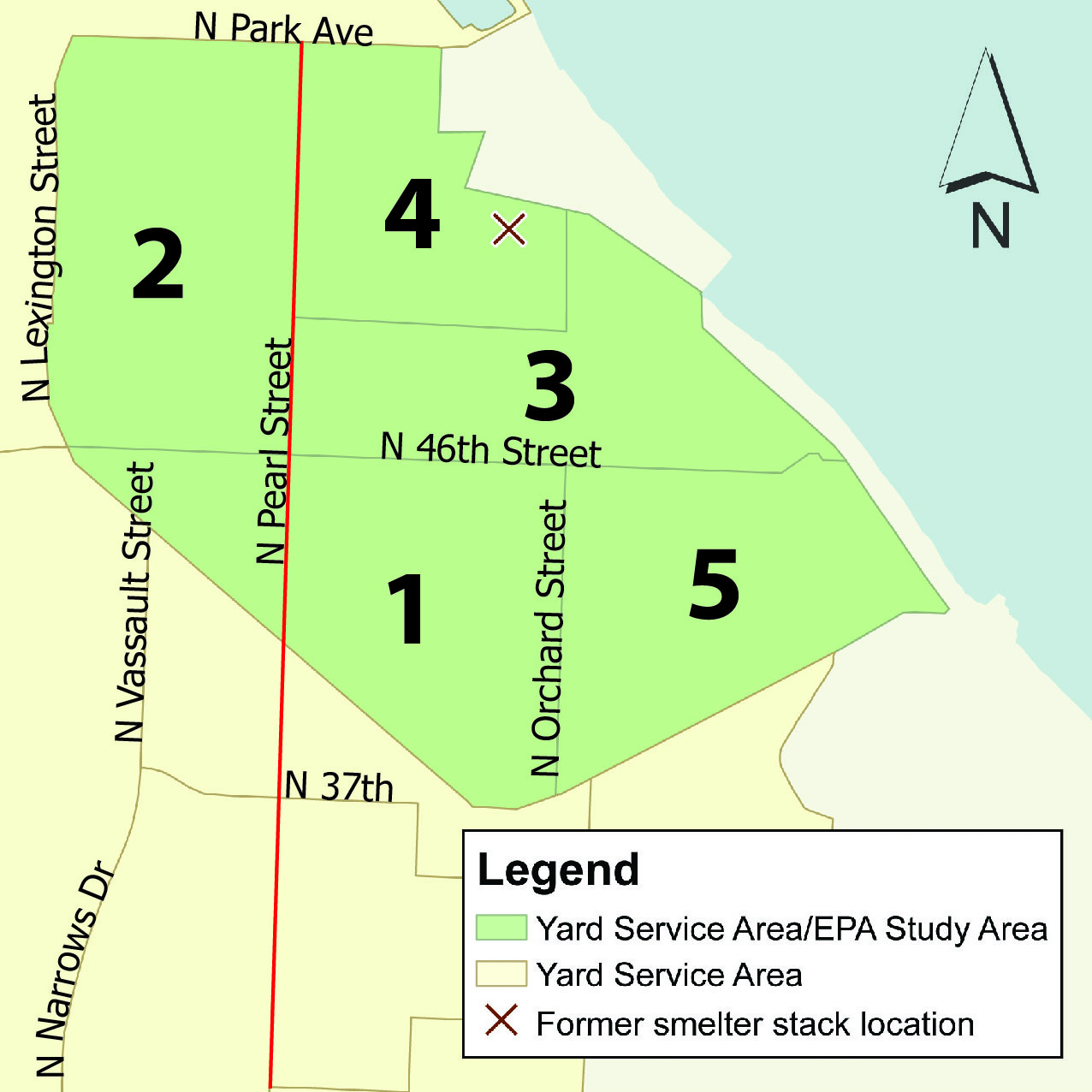Tacoma Smelter Plume — history & studies
The former Asarco smelter site, also known as the Tacoma smelter, was one of the first Superfund sites in the nation. Under EPA's oversight, Asarco sampled soil at 3,570 properties in Ruston and North Tacoma and replaced soil at 2,436 of those properties. The EPA's work focused on the areas closest to the former smelter. Properties qualified for soil work when they had arsenic levels over 230 parts per million.
If you live in the study area (see map below), it is very likely that your property was sampled by the EPA. To find soil sampling information for your yard, go to our Interactive Dirt Alert map.
This is a map of the EPA Superfund study area. It also shows the sequence of our future work. We are currently working in Area 2.
Studying contamination
The start cleanup raised interest in cleaning up arsenic and lead contamination beyond EPA’s cleanup area. Early studies from before 1987 looked at soil in yards, play fields, forests, and other areas. However, many of the studies had few samples and only covered small areas. In 1999, Ecology began working with local health departments on a series of studies to find the full extent of smelter contamination.
Building on the EPA’s cleanup work
Today, we continue the work on yards that was started by the EPA over 20 years ago. We work area by area to replace soil containing high levels of lead and arsenic. In some cases, we go back to places that did not qualify under the EPA’s program to replace soil in those yards
Studying contamination
The start of cleanup raised interest in cleaning up arsenic and lead contamination beyond EPA’s cleanup area. Early studies from before 1987 looked at soil in yards, play fields, forests, and other areas. However, many of the studies had few samples and only covered small areas. In 1999, Ecology began working with local health departments on a series of studies to find the full extent of smelter contamination.
Related links
Contact information
Marian Abbett
Project Manager
Marian.Abbett@ecy.wa.gov
360-407-6255


